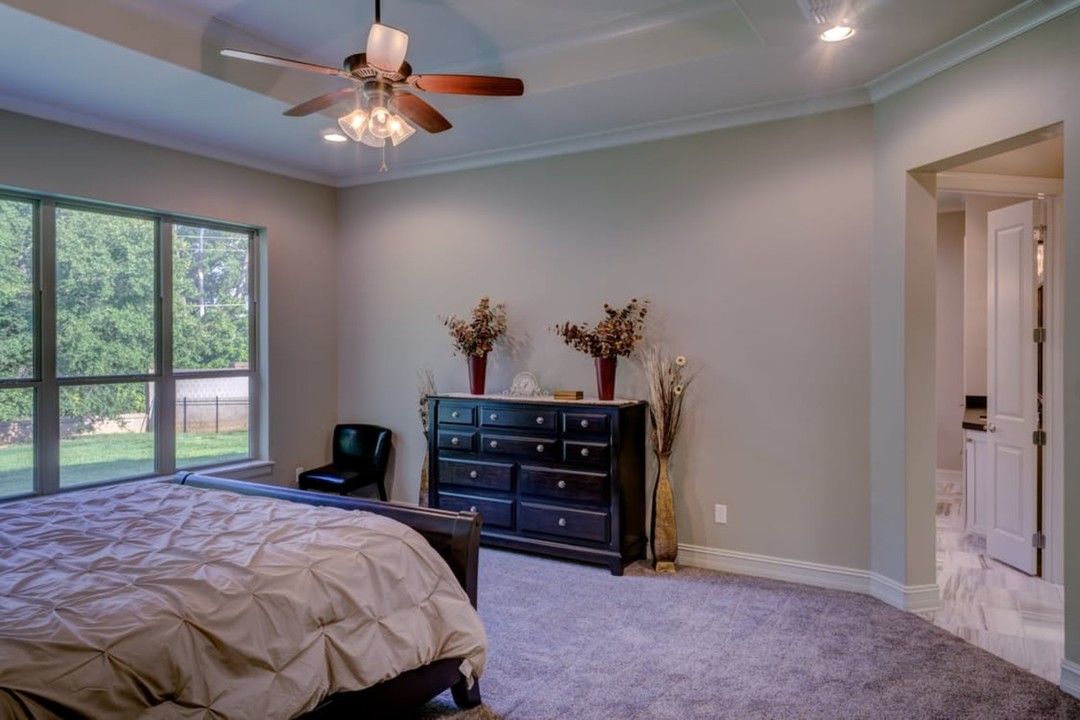When the summer heat hits, cranking up the air conditioning might seem like the easiest way to stay cool. But with rising energy costs, it’s worth exploring natural ways to keep your home comfortable while saving on your energy bill. Cooling your home naturally doesn’t just help your wallet—it’s also a more eco-friendly approach to beating the heat. Let’s dive into some fun and effective tips to keep your home cool without relying solely on the AC.
Harness the Power of Windows
Your windows can be your best friend or your worst enemy when it comes to keeping your home cool. Start by making sure you’re using them to your advantage. During the day, keep blinds, curtains, or shades closed on windows that get direct sunlight. This simple step can block out a significant amount of heat and keep your rooms cooler.
Consider investing in blackout curtains or reflective window film, which can further reduce heat gain. On cooler nights, open your windows to let in the cool breeze, and close them in the morning to trap that refreshing air inside. For even better airflow, open windows on opposite sides of the house to create a cross-breeze, which helps circulate cool air throughout your home.
Use Fans Wisely
Fans are a great way to keep air moving and create a cooling effect without using much energy. Ceiling fans are especially effective—just make sure they’re spinning counterclockwise during the summer to push cool air down. If you don’t have ceiling fans, portable fans can also do the trick. Place them near windows at night to draw in cooler air or position them to blow air out during the day to help expel warm air from your home.
For an extra cooling boost, try this trick: place a bowl of ice or a frozen water bottle in front of a fan. As the ice melts, the fan will blow chilled air around the room, creating a makeshift air conditioner.
Create Shade with Landscaping
Your yard can play a big role in keeping your home cool. Planting trees, shrubs, or vines near your home provides natural shade that blocks the sun’s rays before they even reach your windows or walls. Deciduous trees, which lose their leaves in the winter, are perfect for providing summer shade while allowing sunlight to warm your home in the colder months.
If planting trees isn’t an option, consider adding outdoor structures like pergolas, awnings, or shade sails. These can be placed over patios, windows, or other areas that get a lot of sun, reducing the amount of heat that enters your home.
Insulate and Seal
Good insulation isn’t just for keeping your home warm in the winter—it’s also crucial for keeping it cool in the summer. Proper insulation helps maintain a stable indoor temperature by slowing down the transfer of heat. Make sure your attic, walls, and floors are well-insulated to prevent hot air from seeping in.
In addition to insulation, sealing any gaps or cracks around doors and windows can prevent warm air from entering and cool air from escaping. Weatherstripping and caulking are inexpensive and effective ways to seal your home and improve its energy efficiency.
Cool Your Home from the Inside
The way you use your appliances and lights can have a big impact on your home’s temperature. Appliances like ovens, stoves, and even dishwashers generate a lot of heat, so try to avoid using them during the hottest parts of the day. Instead, opt for no-cook meals, use the microwave, or fire up the outdoor grill.
Switching to LED or CFL light bulbs can also help reduce indoor heat. Traditional incandescent bulbs emit a lot of heat, while LEDs and CFLs are much cooler and more energy-efficient. Turning off lights and electronics when not in use can also reduce heat buildup and lower your energy bill.
Add Reflective Materials
Reflective materials are a great way to bounce the sun’s rays away from your home. Consider installing a cool roof, which is designed to reflect more sunlight and absorb less heat than a standard roof. Cool roofs can be made from reflective paint, sheet coverings, or reflective tiles or shingles. If a new roof isn’t in the cards, adding reflective coatings to existing roofs or walls can also help.
Another simple yet effective solution is to use light-colored or reflective exterior paint. Light colors reflect more sunlight than dark colors, which can reduce heat absorption and keep your home cooler.
Optimize Ventilation
Proper ventilation is key to cooling your home naturally. Make sure your attic is well-ventilated to prevent heat buildup that can make your entire house warmer. Installing an attic fan or roof vent can help expel hot air and reduce your cooling needs.
Consider using exhaust fans in your kitchen and bathroom to remove hot, humid air after cooking or showering. Venting this air outside prevents it from circulating in your home and raising the indoor temperature.
Embrace the Power of Evaporation
Evaporative cooling is a natural and energy-efficient way to cool your home. Swamp coolers, or evaporative coolers, work by drawing in warm air and passing it over water-soaked pads. As the water evaporates, it cools the air, which is then circulated throughout your home. These coolers work best in dry climates, where the air has more capacity to absorb moisture.
If you’re not ready to invest in a swamp cooler, you can mimic this process by hanging damp sheets or placing a wet towel in front of a fan. As the water evaporates, it will help cool the air in the room.
Conclusion: Stay Cool and Save
Keeping your home cool naturally is all about working with the environment and making smart choices that reduce heat buildup. From harnessing the power of windows and fans to creating shade with landscaping and optimizing ventilation, there are plenty of ways to stay comfortable without relying heavily on air conditioning. By implementing these tips, you can lower your energy bill, reduce your carbon footprint, and enjoy a cooler, more comfortable home all summer long. So go ahead, give these strategies a try, and chill out in style!









